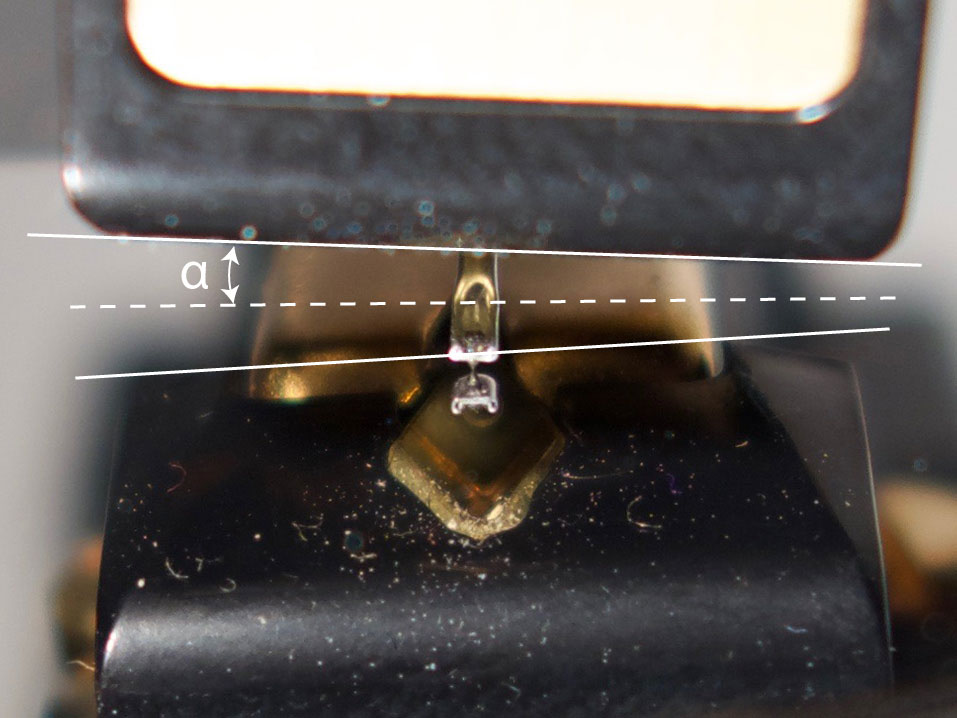As one goes off tangent, it is second harmonic distortion that rises between and without the nulls. WRT how channel imbalance (and stereo separation) relates to alignment, it is lateral azimuth that is most relevant. With gimbal tonearms that don't have the bearing yoke aligned to the same headshell offset, nor a facility to adjust headshell azimuth, setting the tonearm too low or too high will alter azimuth and negatively affect channel balance/separation; regardless, your TA-210 does have offset bearings.
I would suggest having a look at the headshell/cartridge from front on whilst playing. Many (not all) universal headshells are designed with a friction fit that allows rotation of the headshell relative to the bayonet plug that fits into the arm tube socket. Others, classic SME for example, allow the tonearm socket to be rotated within the tonearm tube; with many aftermarket types having a set screw within the headshell.
CAUTION: the TA-210 manual does not mention headshell azimuth as being adjustable.
As to your Shibata tip, as mentioned previously, these are sensitive to SRA, i.e. deviation from vertical orientation of the stylus tips major radius
R when looked at in elevation view from side on. Being off here affects resolution, particularly HF detail more so than outright distortion per se. Minor adjustments to VTF will alter VTA/SRA more so than will minor height adjustments; e.g. WRT the previous example of a 2mm spacer providing a mere 0.5º angular increase with a 240mm effective length tonearm; a .1gm change of VTF would provide more angular change (a circa 1.5º change in VTA/SRA). As such, you are likely to find that, if your arm tube is set level during play with the cartridge manufacturers suggested downforce, increasing by 0.1g may do a lot more than allow higher modulation levels to be tracked securely; much more of what the tip profile is capable of may be revealed across an entire disc side as well. With exotic tip profiles, minor tracking force adjustment is akin to using the focus ring on an SLR camera.
Apheta projection - note suspension not under load, hence the 27º cantilever angle goal, indicating that the recommended VTF of 1.75g causes a -4º deflection to 23º, Rega's preferred cantilever VTA at recommended downforce (image credit: Rega Research Ltd.):
Azimuth misalignment example, reduced channel separation combined with channel imbalance:



